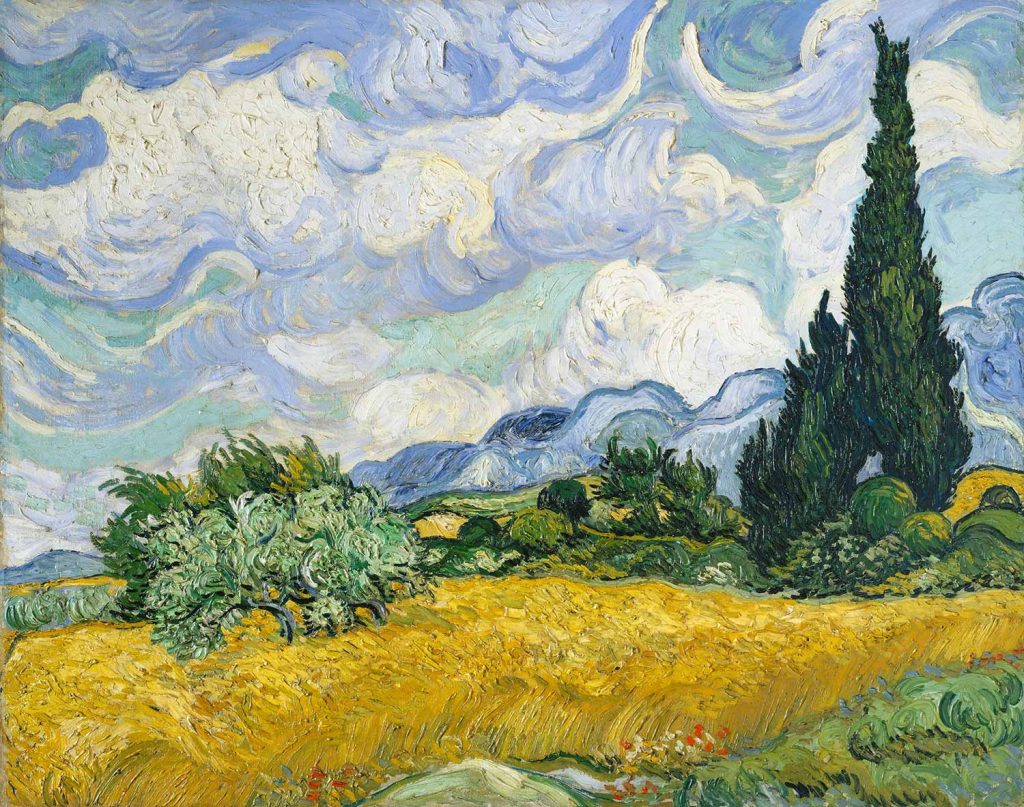
Wheat Field with Cypresses by Vincent van Gogh was created in 1889. The painting is in Metropolitan Museum of Art, New York. The size of the work is 73,2 x 93,4 cm and is made as an oil on canvas.
Van Gogh sketched out the design with charcoal underdrawing; he applied thin paint on the cypress trees and sky, with the ground allowed to show in places, and thick impasto for the foreground wheat and the clouds above. Characteristically, he preferred the brilliant white of zinc white (zinc oxide) for the white clouds rather than lead white, despite its poor drying qualities, with his palette also including cobalt blue for the sky, shades of chrome yellow for the wheat field, viridian and emerald green for the bushes and cypresses, and touches of vermilion for the poppies in the foreground and also synthetic ultramarine. (Read more in Wikipedia)
About the Artist: Dutch Post-Impressionist painter Vincent van Gogh was born in Groot-Zundert. Van Gogh was a serious and thoughtful child. His interest in art began at a young age. Constant Cornelis Huijsmans, who had been a successful artist in Paris, taught the students at Tilburg. His philosophy was to reject technique in favour of capturing the impressions of things, particularly nature or common objects. Van Gogh’s profound unhappiness seems to have overshadowed the lessons, which had little effect. In March 1868, he abruptly returned home. He later wrote that his youth was “austere and cold, and sterile”… Read more
You can order this work as an art print on canvas from canvastar.com

